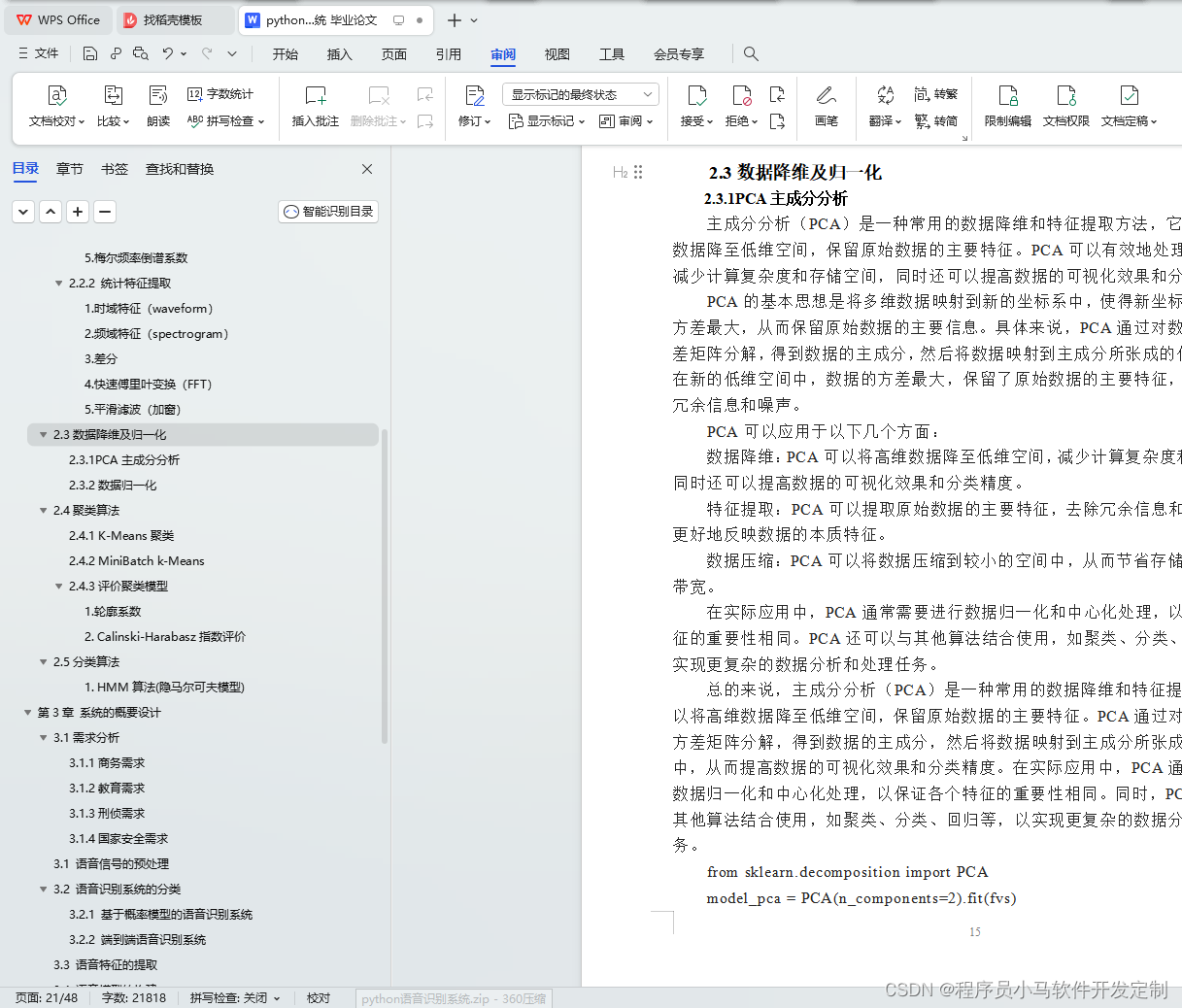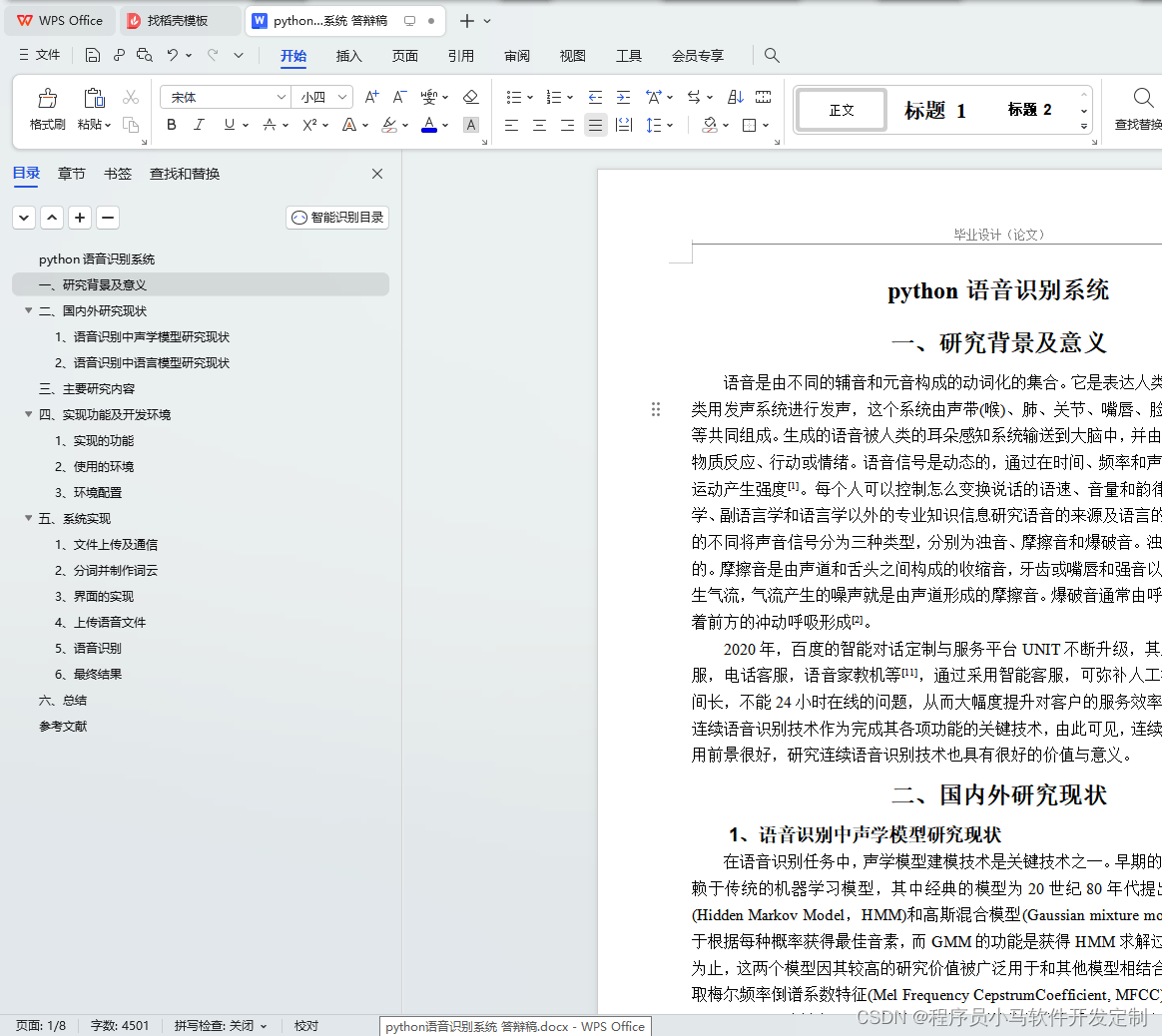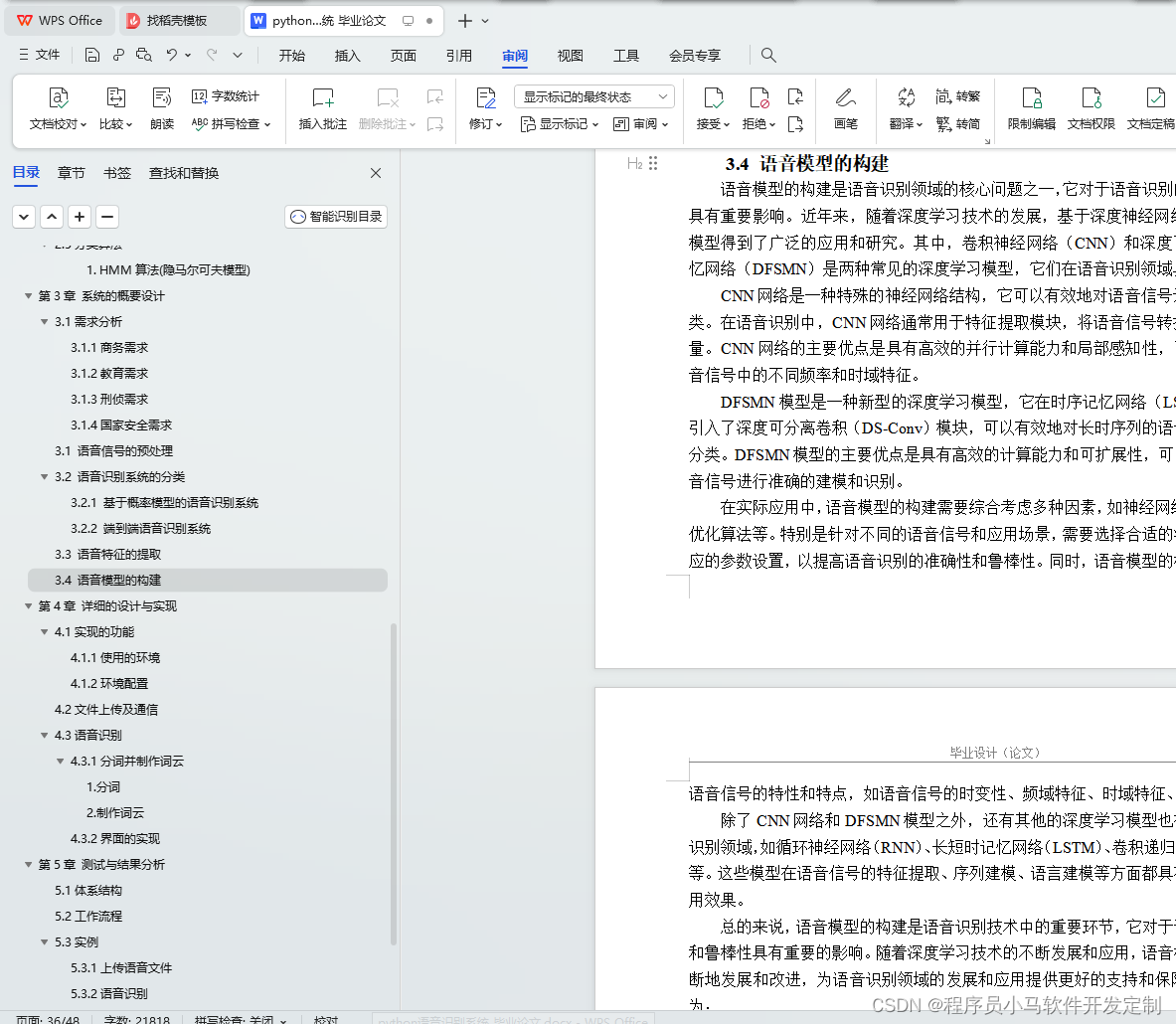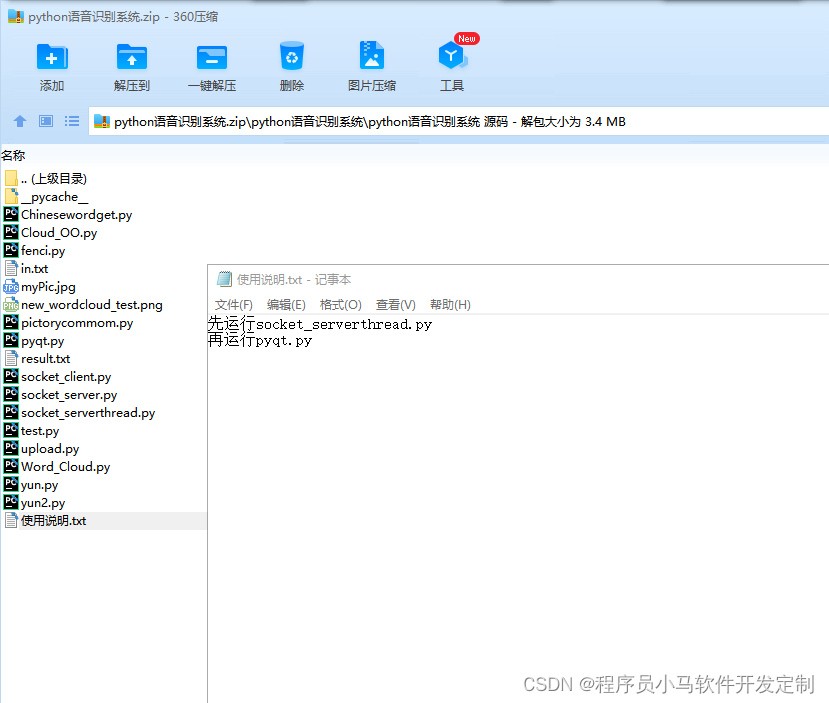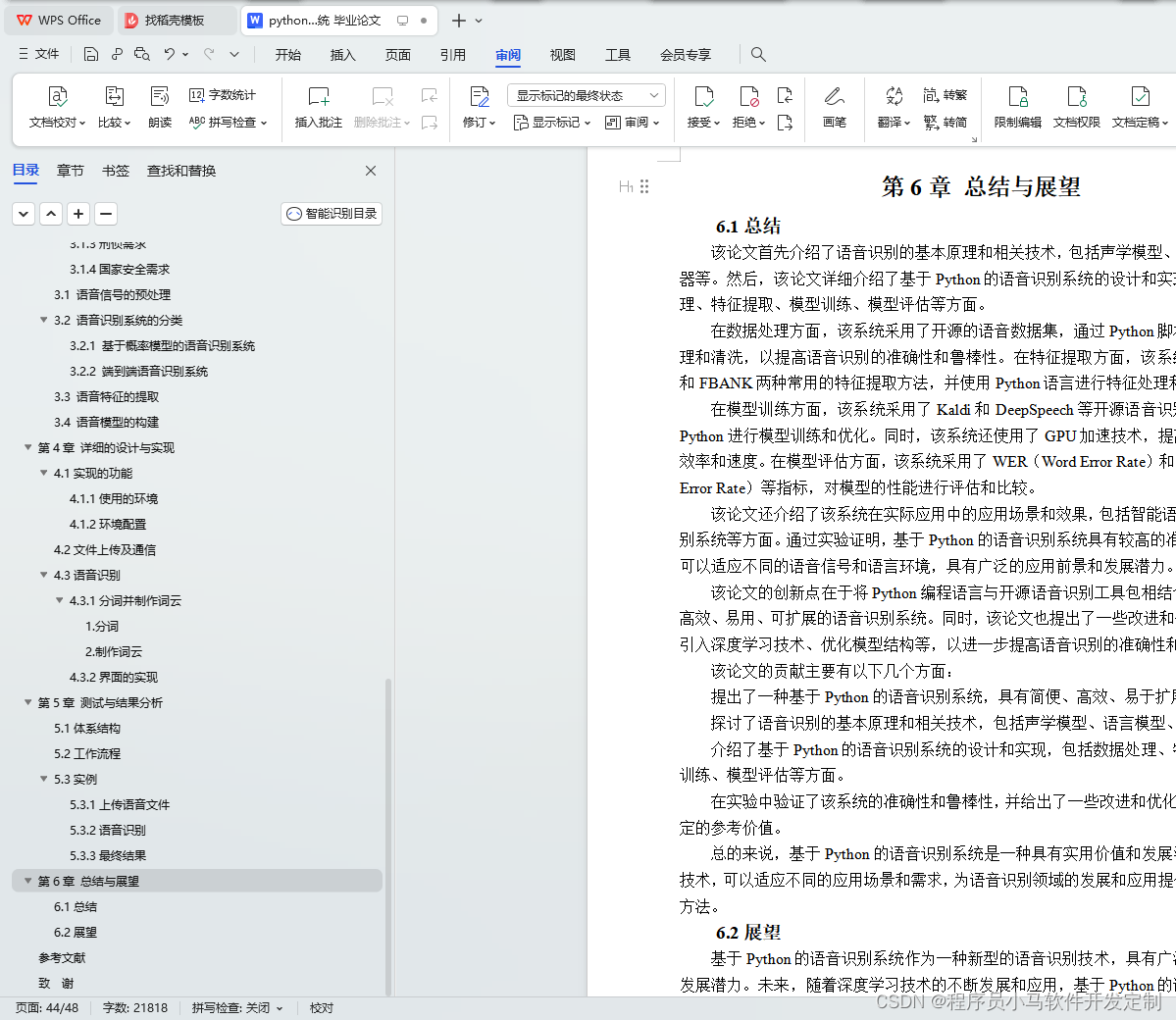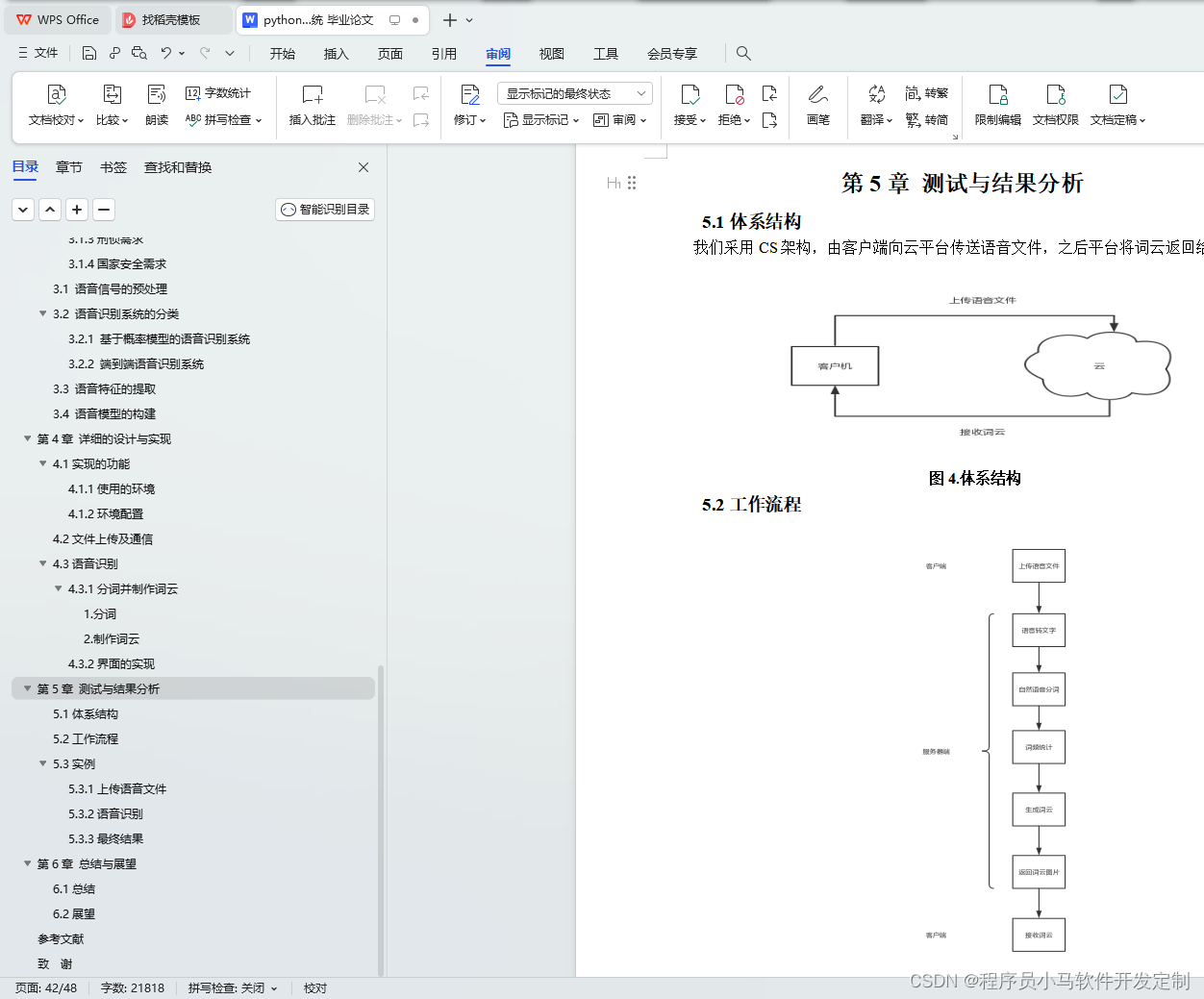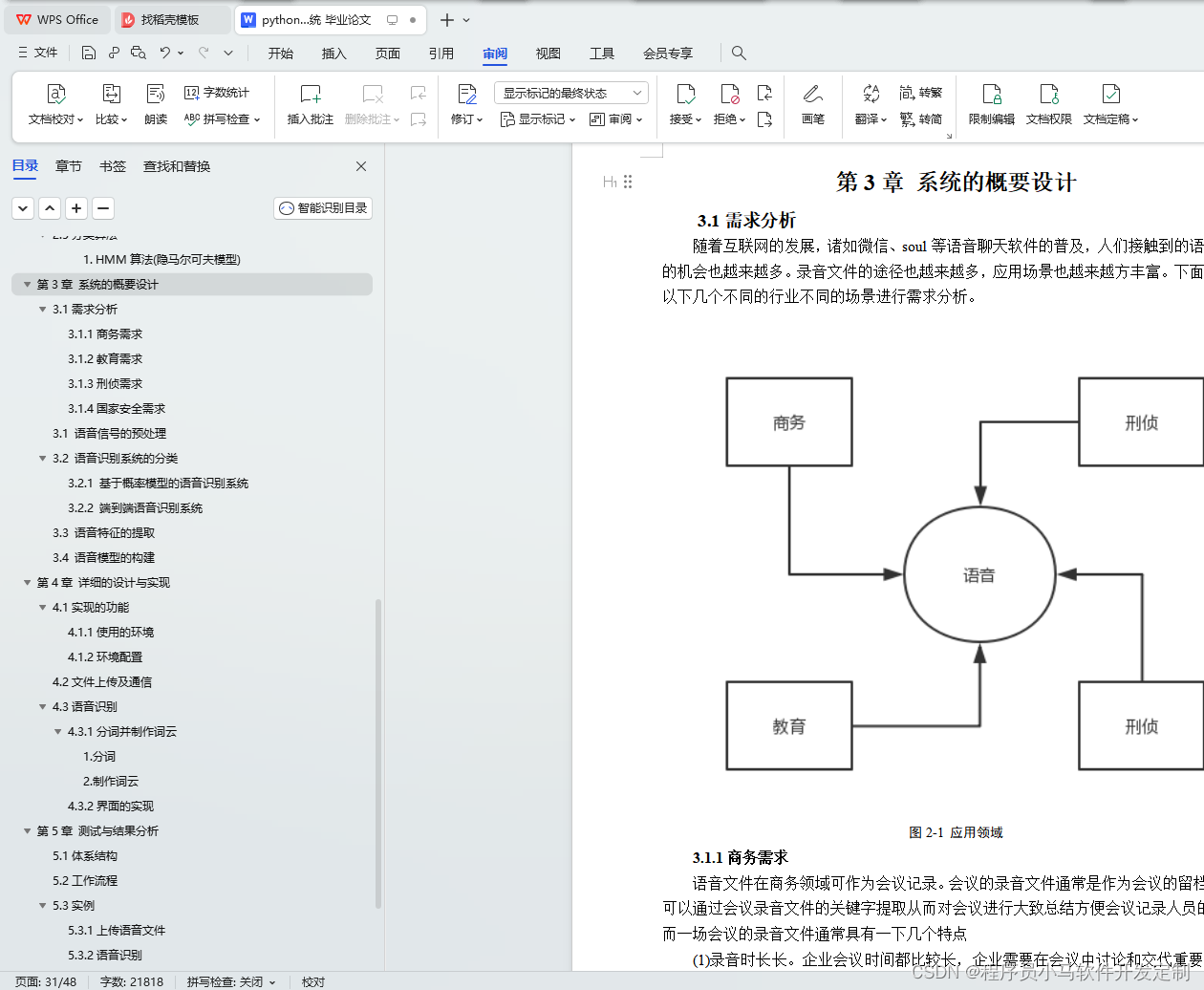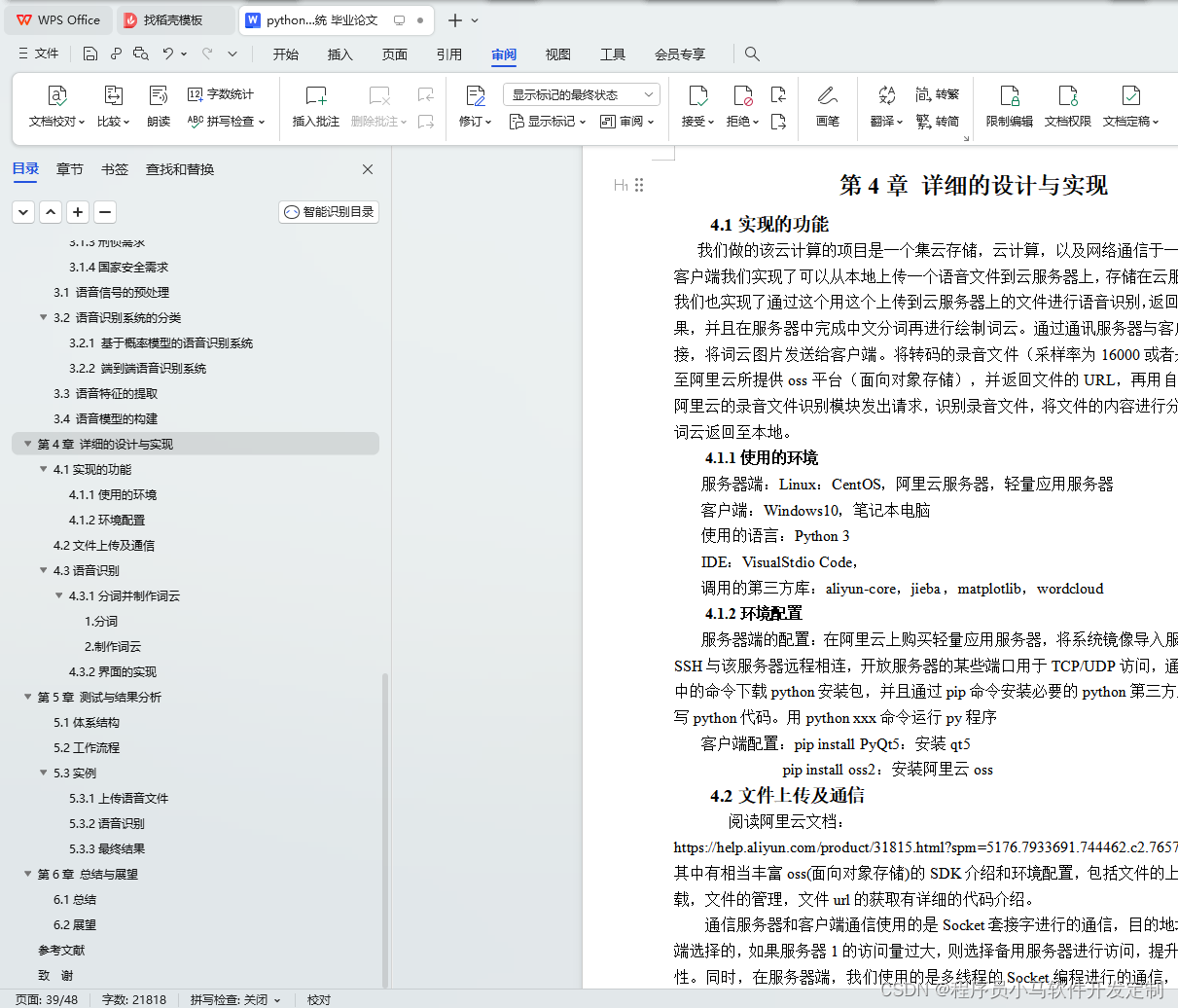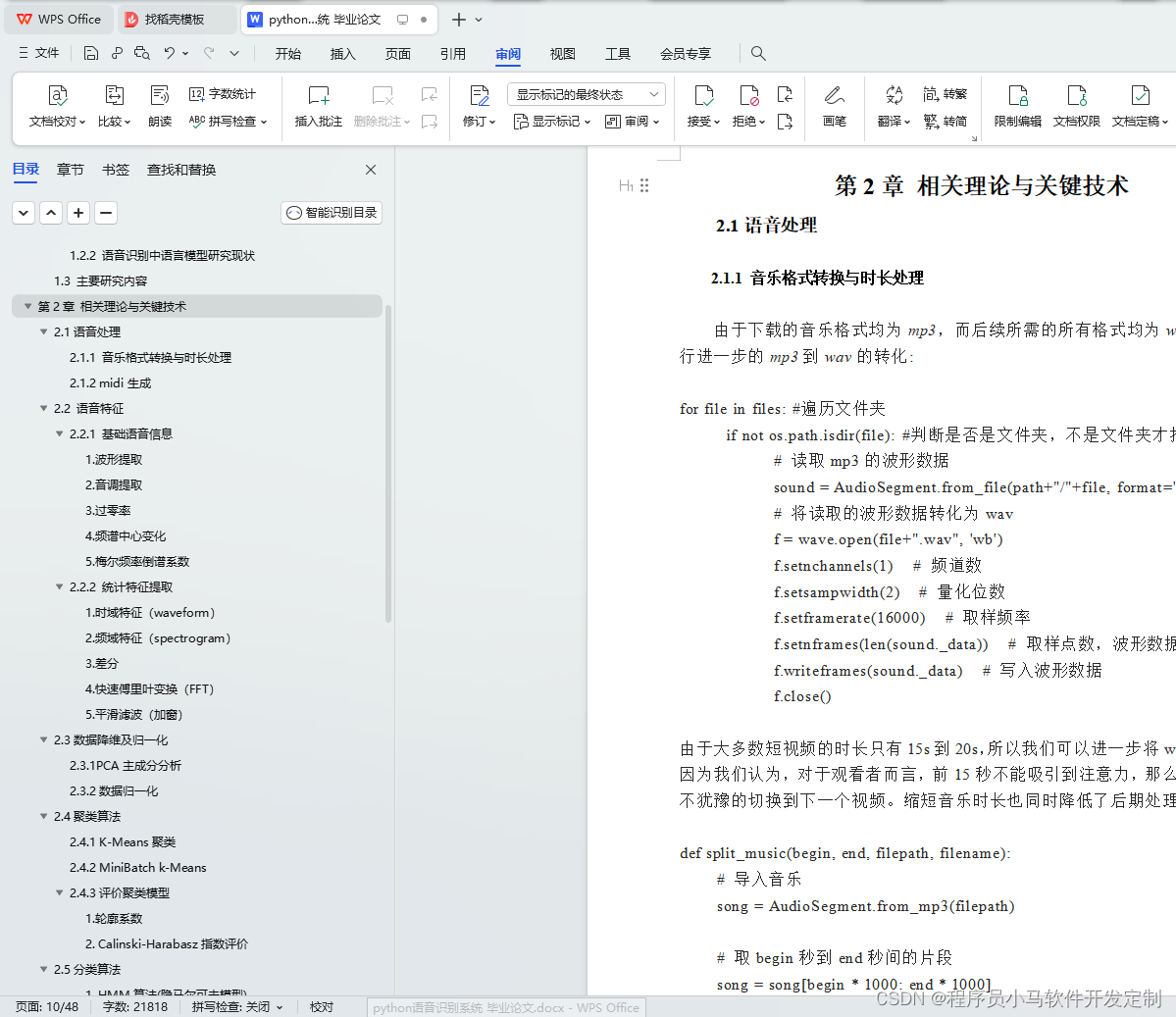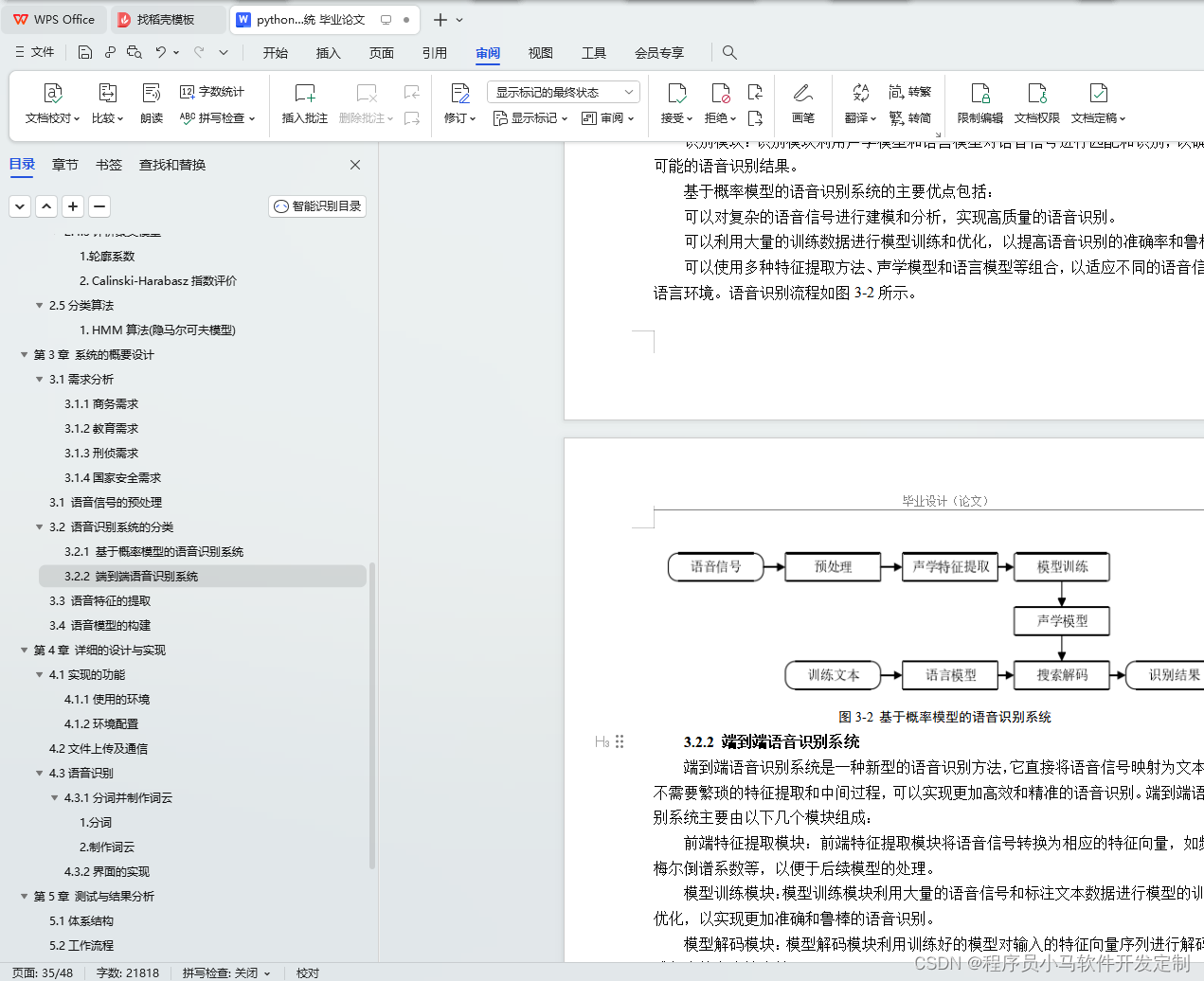- 1Vector的用法_vector
的用法 - 2防火墙——双机热备理论讲解_防火墙双机热备
- 3提供FITC荧光标记多肽激素/多肽类药物/多肽类/多肽链/多肽类物质/多肽类抗生素等多肽的定制合成_异硫氰酸罗丹明b标记多肽 反应
- 4网络编程系列之六 pcap库拾遗与结构体_c++ libpcap pcap_next_ex
- 5ubuntu linux桌面快捷方式,ubuntu 桌面快捷方式
- 6排障——数据库主从复制ERROR 3021 (HY000): This operation cannot be performed with a running slave io thread
- 7VS2019调试时,如何查看指针地址内存中的值_vs2019变量显示地址怎么显示数值
- 8【LoRaWAN】节点+网关+chirpstack实现组播功能
- 9WIFI模块ESP-01S_esp 01 wifi命令
- 10抗生素-哌拉西林
python语音识别系统 毕业论文+答辩PPT+答辩稿+源码_语音识别研究生毕业答辩ppt
赞
踩
摘要
随着互联网的发展,语音文件成为了人们接触得越来越多文件。如何高效的从一段录音中提取出关键信息,提取出其中人们感兴趣的内容,直观的呈现给人门。
本文提出了一个基于Python的语音识别系统,其中引入了TensorFlow模型。该系统的主要目的是实现对不同语种的语音数据进行识别,并将其转化为计算机可处理的文本数据。首先,我们使用Python语言和TensorFlow框架搭建了一个深度神经网络模型,用于对输入的语音数据进行特征提取和分类。在模型训练过程中,我们使用了大量的数据集进行训练,并对模型进行了不断的优化和调整,以提高其识别准确率和效率。其次,我们将训练好的模型与实际应用相结合,基于Python编写了一个语音识别系统。该系统采用了音频输入设备,如麦克风等,对用户输入的语音进行采集和识别,并将识别结果输出为文本数据。最后,我们对该系统进行了实验和测试,结果表明该系统能够有效地识别不同语种的语音数据,并且具有较高的识别准确率和响应速度,能够满足实际应用的需求。
综上所述,我们提出了一个基于Python的语音识别系统,其中引入了TensorFlow模型。该系统具有高效、准确、可扩展性强等特点,可以在各种实际应用场景中得到广泛应用。
Abstract
With the development of the Internet, voice files have become more and more accessible files. How to efficiently extract the key information from a recording, extract the content that people are interested in, and intuitively present it to the human door.
This paper presents a Python-based speech recognition system, in which the TensorFlow model is introduced. The main purpose of this system is to realize the recognition of speech data in different languages, and to transform it into computer-operable text data. First, we built a deep neural network model using the Python language and the TensorFlow framework for the feature extraction and classification of the input speech data. During the model training process, we used a large number of data sets for training, and the model was constantly optimized and adjusted to improve its identification accuracy and efficiency. Second, we combined a trained model with hands-on application and wrote a speech recognition system based on Python. The system uses the audio input equipment, such as the microphone, to collect and recognize the voice input by the user, and outputs the recognition results into text data. Finally, we experiment and test the system, and the results show that the system can effectively identify the speech data of different languages, and has high recognition accuracy and response speed, which can meet the needs of practical applications. In summary, we propose a Python-based speech recognition system in which the TensorFlow model is introduced.
The system has high efficiency, accuracy and scalability and can be widely used in various practical application scenarios.
目录

